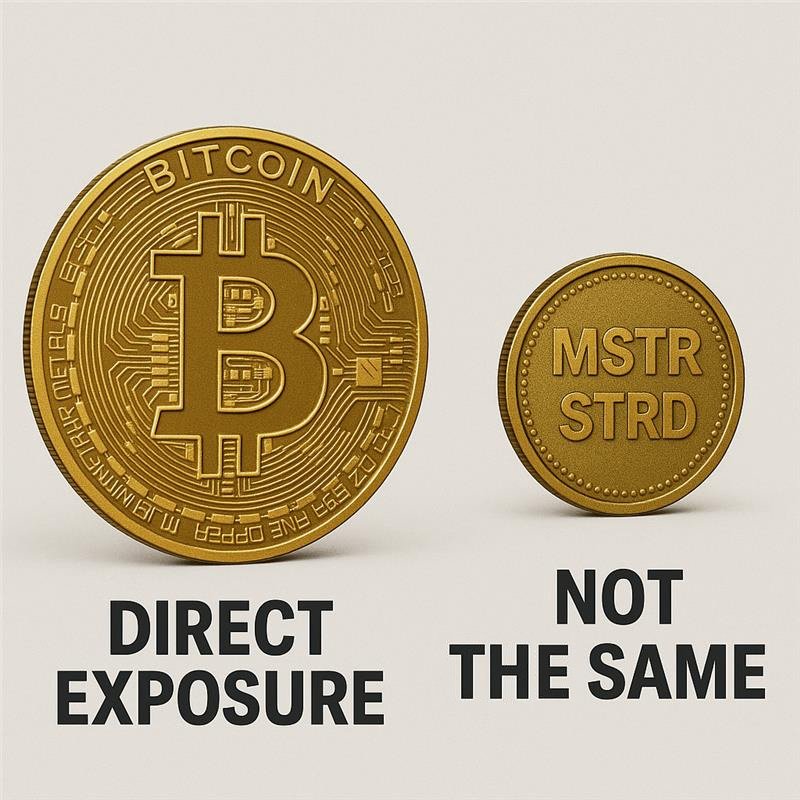Large bitcoin holder MicroStrategy Inc. (MSTR) launched its third preferred stock this week. The 10.00% Series A Perpetual Stride Preferred Stock (STRD) offers investors a 10% dividend yield. That 10% yield may sound juicy, but it could leave uninformed investors with a sour taste in their mouth.
Let’s start with the basics. MicroStrategy (now called Strategy) provides business analytics software. The company positions itself to investors as a “bitcoin treasury company.” MicroStrategy owned $43.5 billion worth of bitcoin as of March 31, 2025. The cryptocurrency accounted for nearly all of the company’s assets.
Preferred stock, like common stock, represents an ownership interest in a company. Unlike common stock, preferred stock carries little to no voting rights. (Shares of MicroStrategy’s Stride preferred stock do not have common stock voting rights.) In the event of liquidation, preferred shareholders have priority over common stock shareholders but not bondholders.
Researching and trading preferred stocks is more difficult than common stocks. Not all popular financial websites provide data on them. Preferred stocks, in general, have lower trading volumes—a potential problem if you need to sell quickly.
The taxation of preferred dividends is also different. Preferred stocks must be held for 90 days out of a 181-day period to qualify for the reduced dividend tax rates of 0%, 15% or 20%. (Dividend-paying common stocks must be held for just 60 days out of a 121-day period.)
MicroStrategy’s Stride Preferred Stock Versus Bitcoin
MicroStrategy’s Stride preferred stock has three key characteristics that make it less attractive than investing in bitcoin in a more direct manner.
-
First, the dividend is fixed at 10% on the stated amount of a preferred share, which is $100. It will not vary with the price of bitcoin. Fixed dividends, like bond interest, do not adjust for inflation either. -
Second, the dividend is noncumulative. If MicroStrategy’s board of directors does not declare a dividend payment on a certain date, preferred shareholders permanently lose the dividend for that quarter and any subsequent quarters without a dividend being declared. [MicroStrategy’s Strike (STRK) and Strife (STRF) preferred stocks, both launched earlier this year, have cumulative dividends. The amounts of any skipped dividend payments for these share classes accumulate until they are paid out.] -
Third, and most importantly, buying MicroStrategy’s preferred stock, common stock or bonds to get exposure to bitcoin inserts layers of complexity and risk. You are purchasing shares of a technology company that invests in bitcoin. This adds business risks to an already volatile cryptocurrency investment. (MicroStrategy’s revenues have fallen during five out of the past six years.)
Buying bitcoin directly gives you the return of bitcoin, rather than the return of a publicly traded company or its preferred shares. However, transaction fees can be high. You will also need to ensure that your bitcoin keys are securely stored.
Bitcoin exchange-traded funds (ETFs) are a popular option. Unlike MicroStrategy, the plain-vanilla bitcoin ETFs do one simple thing: manage a portfolio of bitcoin with the intent of realizing returns similar to those of the cryptocurrency. Bitcoin ETFs are also regulated as investments and not publicly traded companies. They face regulatory limitations on their use of leverage, whereas publicly traded companies do not.
Pessimism among individual investors about the short-term outlook for stocks decreased in the latest AAII Sentiment Survey. Meanwhile, optimism and neutral sentiment increased.
Bullish sentiment, expectations that stock prices will rise over the next six months, increased 4.0 percentage points to 36.7%. Bullish sentiment is below its historical average of 37.5% for the 18th time in 19 weeks and is above 30% for only the 10th time this year.
Neutral sentiment, expectations that stock prices will stay essentially unchanged over the next six months, increased 3.8 percentage points to 29.7%. Neutral sentiment is below its historical average of 31.5% for the 47th time in 49 weeks.
Bearish sentiment, expectations that stock prices will fall over the next six months, decreased 7.8 percentage points to 33.6%. Bearish sentiment is above its historical average of 31.0% for the 28th time in 30 weeks.
The bull-bear spread (bullish minus bearish sentiment) increased 11.8 percentage points to 3.1%. The bull-bear spread is below its historical average of 6.5% for the 19th time in 21 weeks.
This week’s special question asked AAII members how, if at all, they changed their approach to investing recently.
Here is how they responded:
-
I’ve become much more conservative/cautious: 17.2% -
I’ve become slightly more conservative: 23.7% -
I’ve switched around some investments, but only made modest changes overall: 24.9% -
I’ve become more aggressive: 9.8% -
No changes: 24.0%



